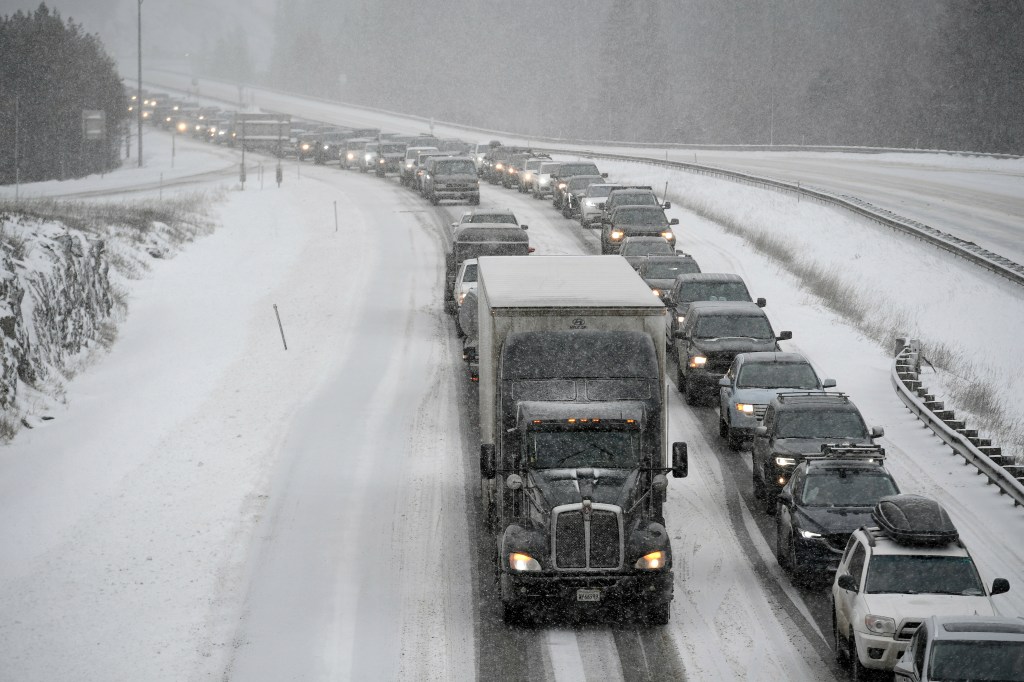Digital Replica Edition
Sign up for Newsletters and Alerts
Sign up for Newsletters and Alerts
Digital Replica Edition
Trending:
As a storm promised snow in Colorado’s high mountains on Thursday, state authorities prepared to enforce a new traction law that requires the use of chains or other anti-slip devices on all two-wheel-drive vehicles along highways during icy weather.
And four-wheel-drive and all-wheel-drive vehicles must still be equipped with tires that have treads at least three-sixteenths of an inch deep.
Colorado legislators updated the traction law in an effort to reduce crashes, spin-outs, pileups and lengthy traffic delays during the winter months when snow falls along the Interstate 70 mountain corridor from just west of Denver through Dotsero.
“If you have a two-wheel-drive or a front-wheel-drive vehicle and you want to go along the I-70 mountain corridor from September through May, you have to be carrying a device you can put on your tires. You only have to put the device onto your tires once it actually starts snowing,” Colorado Department of Transportation spokesman Andrew Hogle said.
“It’s for public safety. We want to see people getting to where they are going safely. We understand the economic and social importance of ski resorts and the tourism industry. It is a bad look for Colorado when we have people waiting for hours (on the road) … because somebody crashed.”
During storms, CDOT officials can declare the traction law “activated” on any state highway. Along the I-70 mountain corridor between Morrison and Dotsero, the law remains in effect September through May. The penalty for violating the law is $67.
National Weather Service forecasters said a storm rolling through western Colorado on Thursday would bring snow at high elevations and a dusting, perhaps a couple of inches, in the mountain foothills.
Last year, nearly 13 million drivers navigated I-70 through the Eisenhower-Johnson Memorial Tunnels west of Georgetown. In November, Colorado State Patrol troopers responded to more than 2,030 crashes.
Under the new traction law, all drivers in four-wheel-drive and all-wheel-drive vehicles must have tires with a tread depth of at least three-sixteenths of an inch, and which are rated as all-weather, have a “mud and snow” designation, or are winter tires. If not, these drivers, too, must use chains or other approved alternative traction devices — like the “sock” fabric products pioneered in Scandinavia that fit over the outside of tires.
Colorado authorities are also cracking down on truck drivers.
Hogle reiterated the rule of thumb for tires: “If you’ve got wear creeping past that three-sixteenths-inch depth, you are not going to be in compliance,” he said. “They have got to be at least three-sixteenths of an inch deep all the way around.”
Get more Colorado news by signing up for our Mile High Roundup email newsletter.
Copyright © 2025 MediaNews Group












